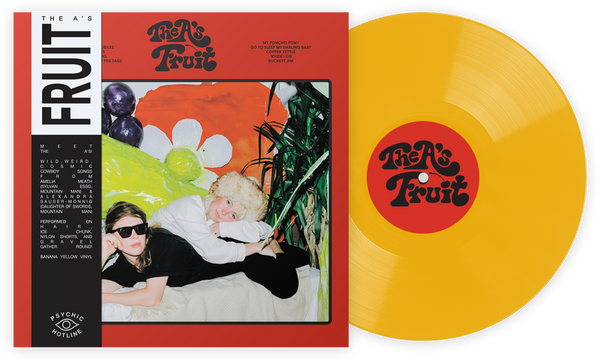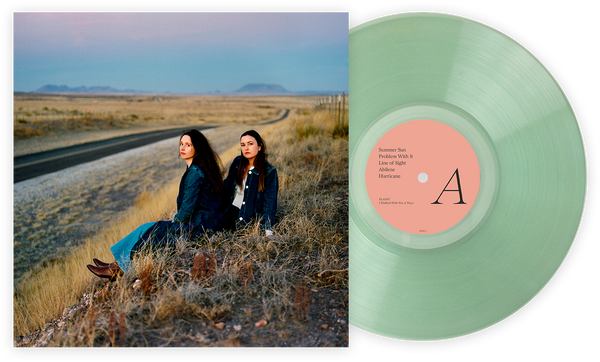Chillwave var aldrig bestemt til at have lang levetid som en genre. I sin indledning var det mere en joke end noget andet. Musikblogger Carles fra den populære parodi-blog Hipster Runoff opfandt termen som en satirisk kommentar til en bølge af afslappede udgivelser fra nye musikere på det tidspunkt og lignende konstruerede subgenrer fra slutningen af 2000'erne. Men måske på grund af dens fængende karakter, eller måske dens nøjagtighed, så hænger navnet ved.
nGenrens popularisering var et tegn på en tid i slutningen af indie-boblen, hvor blogs gjorde sig bemærket ved at opdage nye aktører - og omvendt - og større musikpublikationer havde en overflod af ekstra goodwill at bruge på opportunistiske kunstnere. Som et resultat heraf, med sin forkærlighed for forvrængede bånd-effekter og ’80s pop indadskuende, kommer genrens nostalgi igennem i dobbeltforstand: for de farverige barndomme hos kunstnerne som den længes efter og for det nyere historiske øjeblik omkring en allerede passeret musikbølge.
nInden 2013 var kritikere, publikum og endda chillwave-aktørerne selv gået videre. Nu er den generelle konsensus, at bevægelsens banebrydende identiteter Washed Out, Neon Indian og Toro y Moi, som siden har drejet sig mod andre musikinteresser, har haft succes på trods af deres forbindelse til chillwave. Ikke desto mindre, mens Washed Out, Toro y Moi og andre engang-chillwave kunstnere som Com Truise fortsætter med at udgive ny musik, har subgenren spredt sig til et meget bredere spektrum af musik end tidligere antaget, fra ’80s præget albums af Carly Rae Jepsen og Tame Impala, til mere spidse soniske elementer fundet i numre fra Jay Som til Jessy Lanza. Derfor var der masser af markante plader, der blev til under tågen af chillwave, som er værd at overveje nærmere. Her er de 10 bedste at eje på vinyl.

Panda Bear: Person Pitch
This is the album that started it all. Despite tenants of chillwave being found in earlier works from groups like Boards of Canada, Ariel Pink and even shoegaze acts, none until Panda Bear’s Person Pitch, or after it for that matter, captured the full potential of what chillwave was or could be. Every cribbed element of the genre, from the reverb slathered production to the indecipherable vocals and indistinguishable layers of unidentifiable samples, from the choir boy vocals and West Coast harmonies to the tropical imagery and fascination with adolescence, can be found somewhere in Person Pitch. And while the album may be most recognized for its pair of lengthy centerpieces, two of its more compact tracks, the climbing “Take Pills” and the ambling “I’m Not,” truly acted as the genesis of the sonic and aesthetic qualities the genre took on and for which it’s now known.

Washed Out: Life of Leisure
If Person Pitch was the template for chillwave, a proverbial palette of swatches that each successive chillwave album used as a base coat, then Life of Leisure was its mission statement, a slight, vague axiom written atop the primer. The project’s biggest track “Feel It All Around”—perfectly summarizing Life of Leisure’s and Washed Out creative Ernest Greene’s trademark atmospheric choral backing tracks, upfront bass lines and drawn out vocals—became the de facto soundtrack of the genre and was the early pinnacle of the aesthetic. So much so, actors and musicians Fred Armisen and Carrie Brownstein chose it as the theme song for their sketch comedy show “Portlandia,” which both acknowledged and satirized the much maligned hipster social scene, a sizable division and inseparable component of the chillwave audience.

Toro y Moi: Underneath the Pine
The second album from Chaz Bundick under his Toro y Moi moniker, and his first fully realized effort Underneath the Pine serves as a sample platter of the genre, a sort of amuse-bouche course of chillwave. Inspired by the likes of J Dilla and Flying Lotus, Bundick expanded on ideas found in his first album Causers of This, filling in a bunch of shades and textures, each built out in its own contained space. None of Bundick’s subsequent albums have captured quite the same feeling as found here—as much an indication of his growth as an artist as a reflection of the changing of the musical tides. So, Underneath the Pine remains a touchstone in his discography, and in the pantheon of the genre.

Neon Indian: Psychic Chasms
Whereas many of the albums characterised as chillwave were a music nerd’s approximation of cool, the product of lifelong fans and artists finding the space to try their hand at the form, Alan Palomo’s, who goes by the very chillwave name Neon Indian, Psychic Chasms is actually, sans conditional, just straight-up cool. Heavily informed by the psychedelia of its title and its album artwork, Psychic Chasms stood out, and still does, for its playfulness and immediacy in a medium that begot obfuscation. Its brisk synthpop and aloofness captured the national moment enough, in fact, for Donald Glover to choose “Deadbeat Summer” as one of the songs he rapped over on his I AM JUST A RAPPER mixtape series, which serves as one of the best capsule compilations representing music in chillwave’s era.

Tycho: Dive
The defining work of multifaceted artist Scott Hansen, Dive was created as much out of the mind of a visual designer as a musician. Across its meandering 50 minutes, each of the 10 tracks develops its own landscape or environment within which to get lost. Despite being completely instrumental, what it lacks in vocal comparisons to other chillwave releases, it makes up for in its downtempo pace and indescribably calming characteristics. By far the most serene and zen release featured here, its signature slow-building structure explores the vast intersection between vivid musical sketch and song.

Youth Lagoon: The Year of Hibernation
When he recorded The Year of Hibernation, Youth Lagoon’s Trevor Powers was just 21 years old. This distinguished Youth Lagoon from most of the other artists featured here, as he wrote from a closer proximity to the adolescence he channeled for the album. Still, The Year of Hibernation remains one of the more mature, lyrically and structurally, albums associated with chillwave. Riding a consistent mid-range register across its entire runtime, distant and obscured vocals leave an air of cautious bewilderment doubtlessly informed by Powers’ age and poetically referenced experience with anxiety. Songs like “17” showcased Powers’ early prowess for conveying the sudden transition to adulthood, a theme that informs his entire catalog as Youth Lagoon, which, after a trilogy of records that started with The Year of Hibernation, he has since retired, cryptically citing new musical interests.

Baths: Cerulean
Another debut from an artist just 21 years of age, Bath’s Cerulean embraces the childlike wonder and innocence yearned for during chillwave’s heyday. The album’s shimmering production has Will Wiesenfeld, the musician behind Baths, reveling in the sort of wide-eyed excitement the stage name, a reference to the time he spent reflecting on art in his tub as a child, conjures. Between the “Kids Say The Darndest Things”-esque soundbites sampled on the sunny “Aminals” and the buoyant beats and falsetto vocals featured on the twinklingly named “Rafting Starlit Everglades” and “Rain Smell,” Cerulean is a complete mastery of one of chillwave’s defining facets.

Best Coast: Crazy For You
California indie rock duo Best Coast’s Crazy For You is the least traditionally chillwave-sounding album on this list. However, the breezy debut is unmistakably chillwave in spirit. The hazy, left coast harmonies, delightfully sluggish melodies and simplistic “lazy/crazy” and “kiss/miss” monosyllabic rhyme schemes all cultivate a distinct mood parallel to the early Fashion Boutique-core established around the turn of the decade. Tellingly, Crazy For You rolled out with an exclusive pre-release by Urban Outfitters and was paired with a trendy “West Side Story” inspired music video for the brooding single “Our Deal.” Nevertheless, Crazy For You is the outlier in a now endlessly attempted space, honing a very specific sound unreplicated to its complete extent to this day, which even frontwoman Bethany Cosentino moved away from by their next album.

Gold Panda: Lucky Shiner
Much more upbeat and overtly electronic than its peers, Gold Panda’s Lucky Shiner was linked to the chillwave movement as much due to the logistics of its release as any other relations it had. As the first full-length from a mysterious artist coming out of Ghostly International—the same label to house Tycho and Com Truise—Lucky Shiner was easily grouped in with the works of its contemporaries. Nonetheless, barring the surface level differences, Gold Panda’s incorporation of analog sound effects along with artificial cracks and pops mimicking a vinyl record lend his debut album the same eye to the past. Combining elements of trance and ambient music with the dancier side of IDM, Lucky Shiner is a diverse cross section of all that chillwave was. Opening track “You” and midpoint “I’m With You But I’m Lonely” run the gamut of emotions associated with the genre, the former a saccharine blast of energy and the latter an introspective burn that flips halfway through, yet retains its original melancholy.

Bombay Bicycle Club: A Different Kind of Fix
A Different Kind of Fix shows just how far the aspects of chillwave reached in the short amount of time it trended. After a couple of straightforward indie rock releases, English rock band Bombay Bicycle Club tapped pop producer Ben H. Allen for his work on Animal Collective’s seminal Merriweather Post Pavilion. With his influence, Bombay Bicycle Club married their folksier tendencies with Allen’s saturated production style. The result is a guitar-led, organic instrument take on chillwave, with traditionally pop-seeming songs turned extended grooves like “Your Eyes” and standout “Lights Out, Words Gone,” the tones of which still reverberate through indie rock six years later.
Matt McMahon er freelancer fra New Jersey, som kan findes skrive om, ud over musik, også tv på steder som Splitsider og film på steder som CutPrintFilm. Han deler i øjeblikket sin tid mellem Dallas, Texas, og online.
Bliv medlem af klubben!
Tilmeld dig nu, fra 44 $Eksklusiv 15% rabat til lærere, studerende, militære medlemmer, sundhedsprofessionelle & førstehjælpere - Bliv verificeret!












